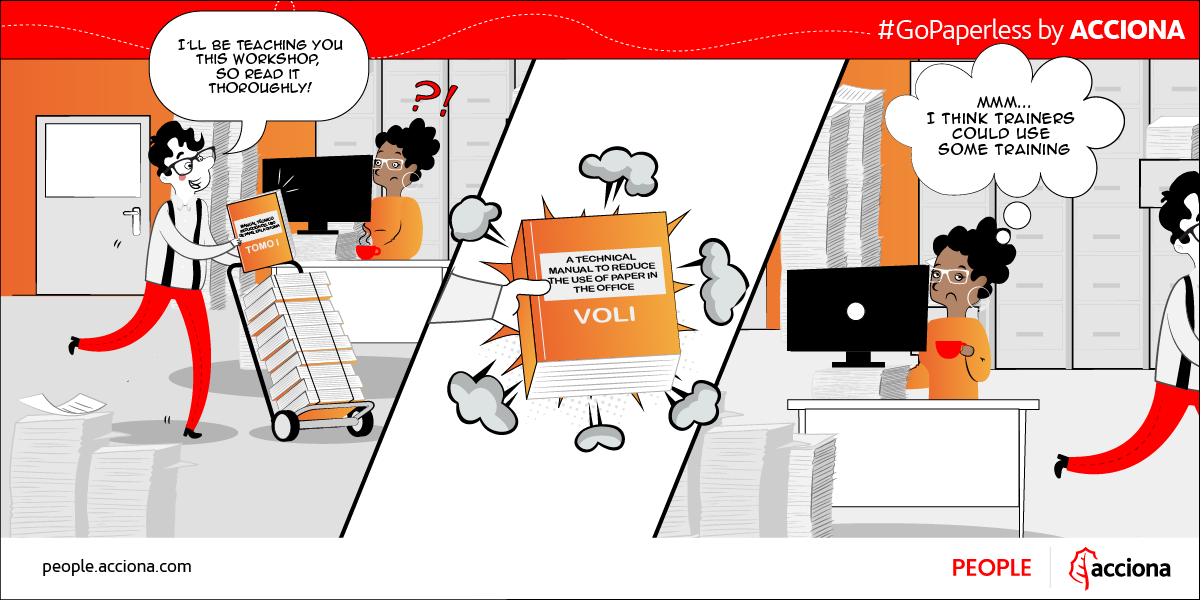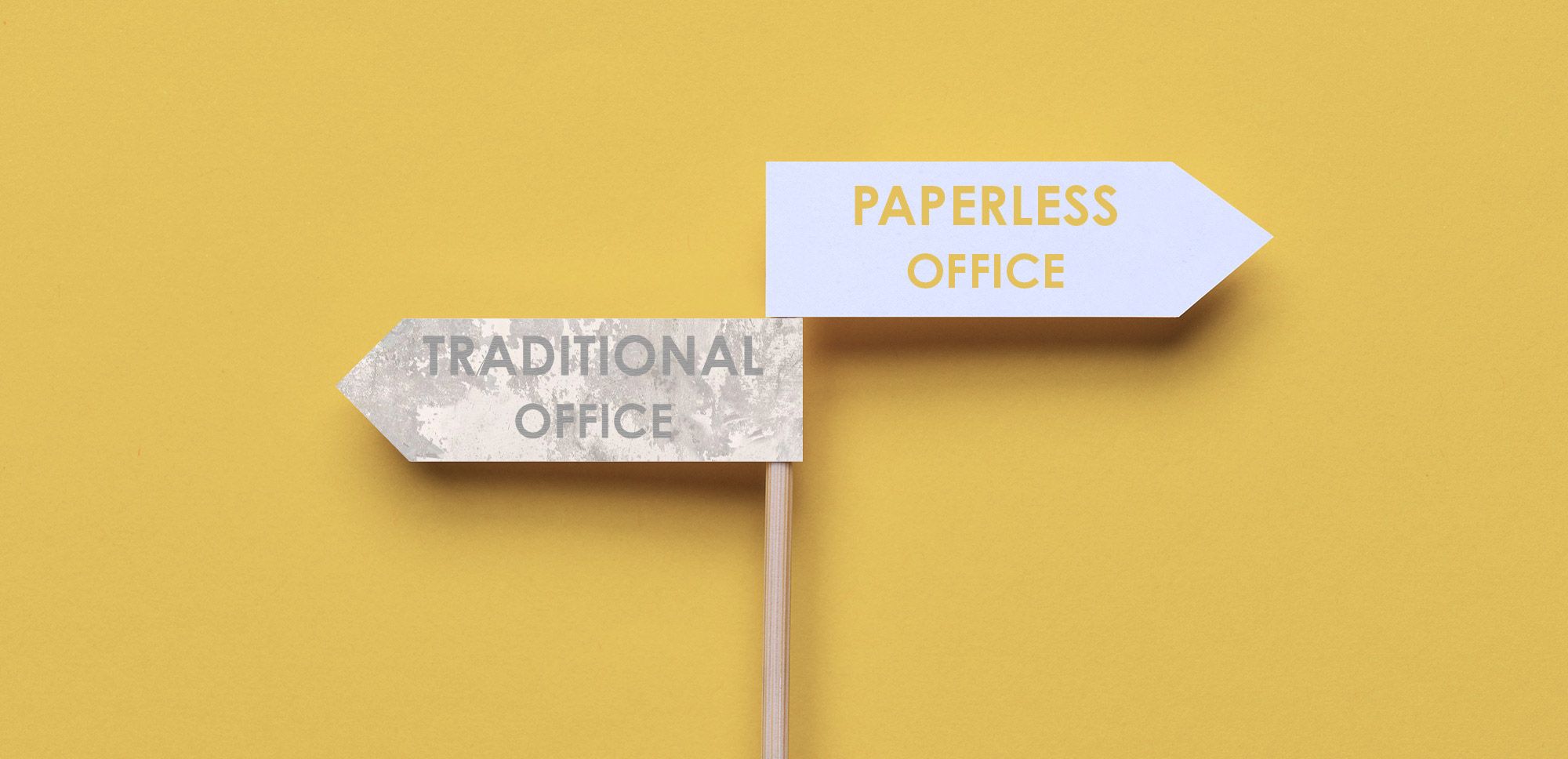We should be forever grateful to paper, and to all its predecessors, for its contribution to the advancement of humanity. The leap that society has collectively made thanks to paper is spectacular. It has allowed us to transmit knowledge, to calculate, to sell, to buy, to sketch, to record, to read, to paint, to think. Paper has not come to an end, but everything points to the fact that society won’t make any further qualitative leaps thanks to paper. There are interesting alternatives in many fields that we should explore. One of them is paperless, the paperless office and the corporate world.
Against deforestation, usefulness
Why do we use (so much) paper in companies? We print, (and we must remember again that the printing press is in the Olympus of inventions) contracts, emails, agreements, presentations, reports. Is it necessary? Is it useful? Some studies reveal that a worker makes an average of 61 trips to the printer per week, and that the average time to find a pre-printed document is 18 minutes. Paper obviously has many advantages and that’s why it’s still alive and well, but it also generates many problems and costs.

Advantages and disadvantages of a paperless office
Sellen and Harper point out three major problems of paperless office in their book The myth of the paperless office:
- The symbolic problem, associated with companies that work with paper, which are perceived as slow, bureaucratic, not very agile, and in short, from the past.
- The problem of cost, generated by the printing process, but also by the costs of storage and security and custody of the documents.
- The problem of interactivity, caused by the very nature of the paper, since it is always local, making interaction and management between different actors difficult.
That’s why we have a clear invitation to reflect on a new paperless culture, or a new digital culture, which aims to reduce paper management to zero. This new cultural transformation can have at least four major advantages for organizations:
- Sustainability: There is no doubt that the reduction of paper has a positive impact on the environment, but not only in the felling of trees, as we can already assume, but also regarding the use of water. A paperless culture is to participate and contribute to a new, more sustainable social and corporate paradigm. We can find dozens of interesting numbers. See Statista and Greenpeace, for instance.
- Traceability: The classification of papers and documents is an art, and not all of us have this ability. It’s extremely difficult to classify printed documents both at a personal level (desk and drawers) and at an organizational level (filing cabinets, warehouses), causing significant loss of time. The paperless culture is not only sustainable but, if the processes are clear, it facilitates traceability as well, and therefore the monitoring and location of documents. In addition, if companies tend towards a hot desking policy, it does not make sense to go for a physical drawer unit, but for a virtual one.
- Security: Paper gets damaged. It gets lost. How many good works must mankind have been deprived of because of some misfortune of the medium? Tell that, for example, to Lord Byron and the fateful outcome that his publisher arranged for his memoirs; his wanderings, which the poet had written down years before, were burned to prevent the world from knowing his conquests, his fights and, most valuable of all, his most intimate reflections. With less tragic endings, paper does not last forever within organisations either. And custodianship of documents and contracts is a headache. It requires, first, an important physical space, and second, to guard this physical space. Some documents, such as those already physically signed, be they notarial, registry or financial documents, will still need to be physically stored. But there are a new number of documents, especially newly created ones, with interesting digital alternatives.
- Interaction: Paper is local. There can be three copies, that’s true, but they are three documents in three separate local spaces. Paperless culture is, on the other hand, global. Documents can be handled, signed, worked on from anywhere in the world. Along with sustainability, traceability and security, interaction is another benefit of the new paperless culture.
The road to a paperless office
However, if the benefits are so clear, why is it so hard for us to change the paradigm and move towards a new paperless culture? There are two big barriers: technological and cultural. We need technology and a symbolic revolution. Technology has arrived in force: the use of digital certificates, electronic signatures, cloud storage, and a long etcetera. Perhaps there’s still a lack of training, but technology is on our side.
Where more work needs to be done is in cultural change. How do we move towards a paperless culture, when our team is always printing, either for convenience, or because of a lack of security?
Here are 6 guidelines that can help foster a paperless culture:

- Common mission. It is essential that all members of the organization perceive that the new paradigm shift is a common mission, which makes the organization more competitive, through sustainability, traceability, safety and interaction.
- Open communication. It’s important, therefore, to communicate openly all the advantages of the new culture to all members of the organization, as well as its new processes, available tools, implementation schedule, and above all spaces for doubts and collective reflection.
- Powerful training. To implement a new paperless culture, users —i.e. all members of the organization— must feel comfortable, prepared, and capable with the new tools. Therefore, timely training must be provided. A new paperless office is not possible without a good command of the new tools.
- Experiment without fear. As in all change processes, it is important to foster a culture of error, where there is no fear of making mistakes. It’s crucial to experiment without fear with all the new tools, and new working practices.
- Strong Leaders. A paperless culture will not succeed if its leaders are not exemplary. You need leaders who make the advantages of the paperless culture visible with their behaviour and new habits. This is the best way to start.
- Reward paperless champions. However, it’s not just the good work of leaders that can make the new paperless culture work. Team members need to buy into the new habits. Creative ways can be devised to reward or incentivize good new users of the paperless culture.
In short, the paperless culture is a clear invitation to agility, sustainability, and collaborative work. The barriers are still visible and physical, but with good guidelines and good leaders, the change towards a paperless office is possible.
Sources
Sellen, A. J., & Harper, R. H. (2003). The myth of the paperless office. MIT press.


